
“Lewis Burwell ‘ Chesty’ Puller, born in the 19th century, fought in the heaviest fighting of the 20th century and is now a legend in this century. The most decorated Marine to ever wear the uniform, and also the most beloved, Puller left a mark on the Marine Corps that would define its culture for years to come.”
– Michael Lane Smith
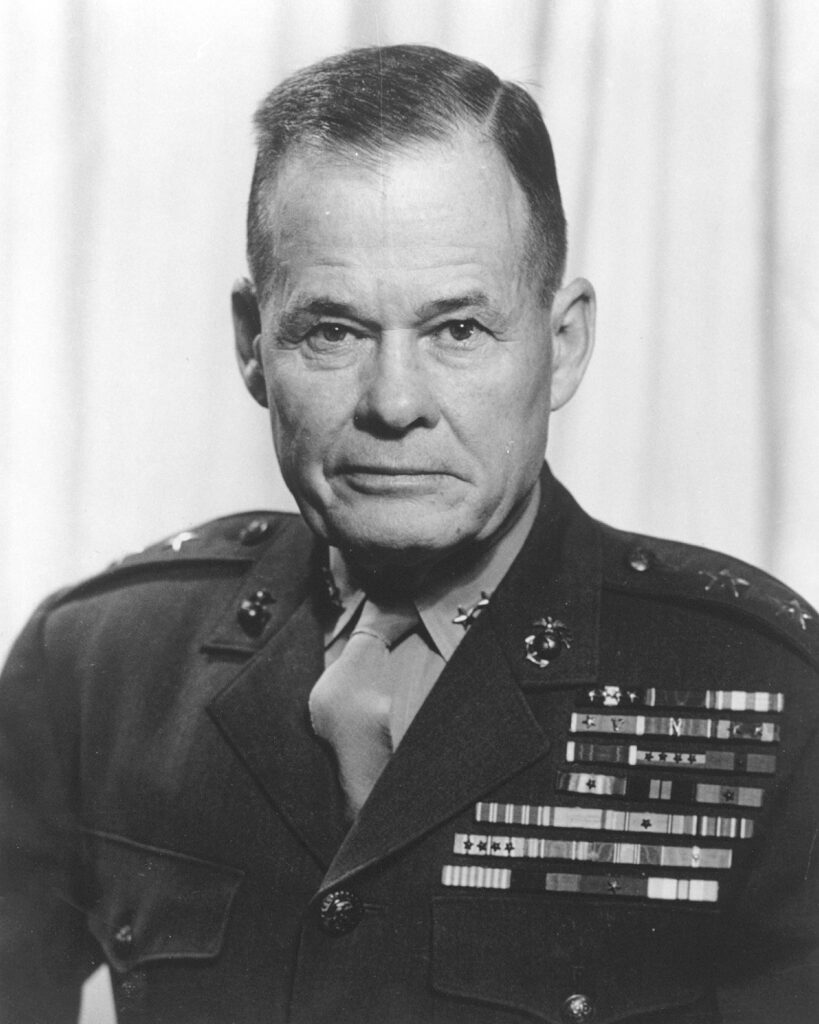
Biography of Lewis “Chesty” Puller
The son of a grocer, Lewis “Chesty” Puller was born June 26, 1898, at West Point, Virginia, to Matthew and Martha Puller. He loved hunting and fishing and was a military history buff who grew up listening to old veterans’ tales of the American Civil War and idolizing Thomas “Stonewall” Jackson. He was forced to help support his family after his father’s death when he was ten. Puller attempted to join the U.S. Army in 1916 to take part in the Punitive Expedition to capture Mexican leader Pancho Villa, but he was too young and his mother refuses to grant parental consent. In 1917, he followed his martial interest to VMI (the Virginia Military Institute).

With the US entry into World War I in April 1917, Lewis “Chesty” Puller quickly became restless and tired of his studies. Inspired by the US Marines’ performance at the Battle of Belleau Wood (1 – 26 June 1918), which occurred during the German Spring Offensive in World War I, near the Marne River in France, he dropped out of VMI after one year to enlist in the US Marine Corps, saying that he wanted to “go where the guns are!” Completing basic training at Parris Island, SC, Puller received an appointment to officer candidate school. Passing through the course at Quantico, VA, he was commissioned as a second lieutenant in the Marine Corps Reserves on June 16, 1919, but WWI was winding down and the government was drastically scaling back the military, and he was placed on inactive reserve ten days later with the rank of Corporal.
Puller then re-enlisted in the active-duty Corps, this time as a private. After thirteen weeks of “running eighty miles a day, climbing sheer cliff faces with his bare hands, and crawling under barbed wire while Drill Instructors whacked him over the head with rusty medieval polearms and belted forth a constant stream of multiple profanities,” Puller was shipped out to Haiti to fight peasant brigands from the mountains called the Caco rebels, who were determined to carry out a violent overthrow of the U.S.-sponsored Haitian government.
Over the course of five years, Chesty fought in over forty engagements against these rebels, gaining valuable experience in small-unit tactics and jungle warfare. His toughness earned him rapid promotions and a commission to Lieutenant. This guerilla warfare experience served him well when he shipped to Nicaragua in 1930.
The purpose of the Nicaraguan campaign was to protect U.S. civilians and economic interests in the country after fighting broke out between a U.S.-backed government and a guerrilla force under Augusto Cesar Sandino. The Marine Corps was sent to train and lead the new National Guard forces against the insurgents.
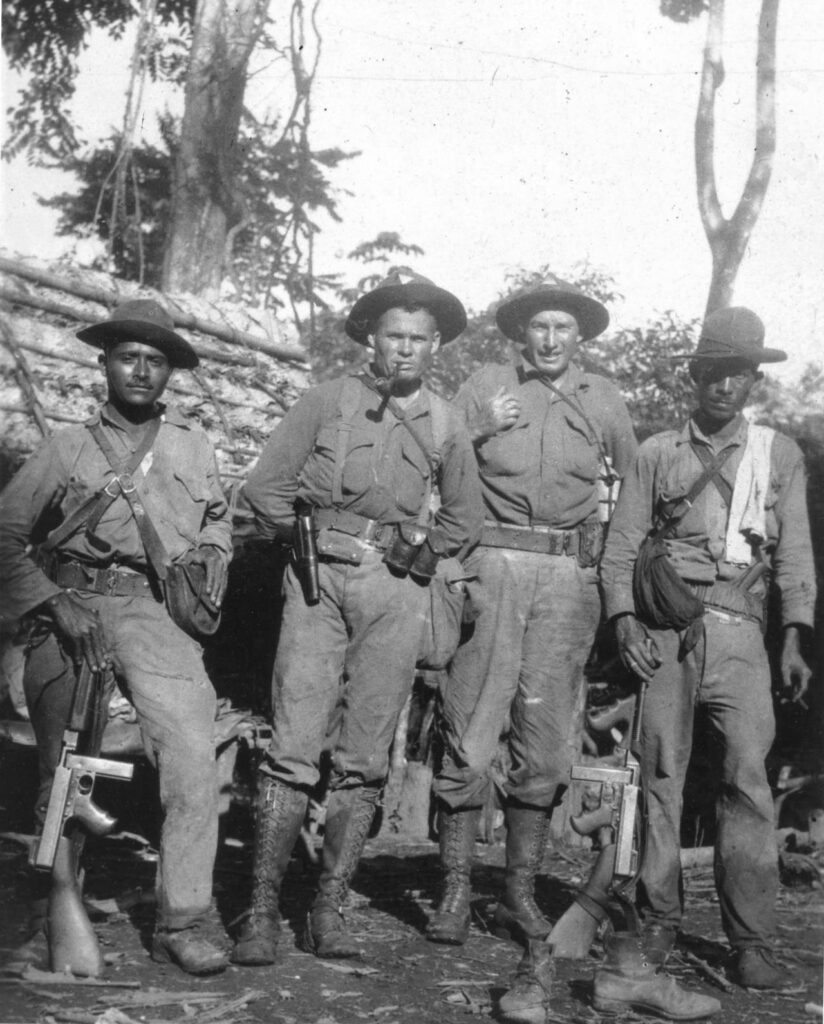
Puller’s Men Routed the Enemy in Five Separate Engagements
In one of his first missions of the campaign, Lewis “Chesty” Puller led his platoon in a charge against fortified positions held by a much larger force of heavily-armed rebels. Over the course of one week, Puller’s men routed the enemy in five separate engagements, completely annihilating the rebel positions while sustaining minimal casualties. For his bravery in combat, Puller was awarded the Navy Cross – the Marine Corps’ second-highest award for bravery just below the Medal of Honor.
Puller’s citation states he systematically “led his forces into five successful engagements against superior numbers of armed bandit forces. Hunting the insurgents through the jungles, Lewis “Chesty” Puller persecuted the enemy relentlessly.”
His actions, which “dealt five successive and severe blows against organized banditry were exceptional” and would begin his legacy as a five-time recipient of the second-highest commendation for valor in combat.
Two years later, during the Second Nicaraguan Campaign in September 1932, Puller and his company of 40 Nicaraguan soldiers were on patrol 100 miles north of the nearest base in Jinotega. After a six-day march, Lewis “Chesty” Puller was leading his unit through a treacherous mountain pass when rebels suddenly ambushed them from all sides with machine guns, mortars, and bikes with guns mounted on the sides.
The rebel gunfire killed the Nicaraguan soldier directly behind Puller and seriously wounded his second in command. Responding immediately, Puller directs his men to aggressively attack the insurgents on the high ground and overtake their positions. Two of Puller’s 40 men were killed, six were wounded, while the opposing force of 150 rebels was completely decimated and scattered.

Lewis “Chesty” Puller Received a Second Navy Cross
Then, on the way home, he was ambushed twice more. For getting his platoon home safely with minimal loss of life, Puller received a second Navy Cross. By the time that he left Nicaragua, Chesty was known as “The Tiger of the Mountains,” a nickname he earned presumably by clawing the eyes out of a traitorous rebel, and he was so despised by his enemies that the leaders of the rebel guerrillas had put a 5,000 peso reward on his head.
Lewis “Chesty” Puller bounced around for a while after Nicaragua, serving at several different posts both on land and at sea, including a stint as the commander of the elite “Horse Marines” unit in Beijing, China in 1933, where he rode around on horseback all day and practiced the age-old cavalry tactics. His next assignment was overseeing the Marine detachment aboard the cruiser USS Augusta. In 1936, Puller was made an instructor at the Basic School in Philadelphia. In 1940 he served with the 2n Battalion 4th Marines at Shanghai.
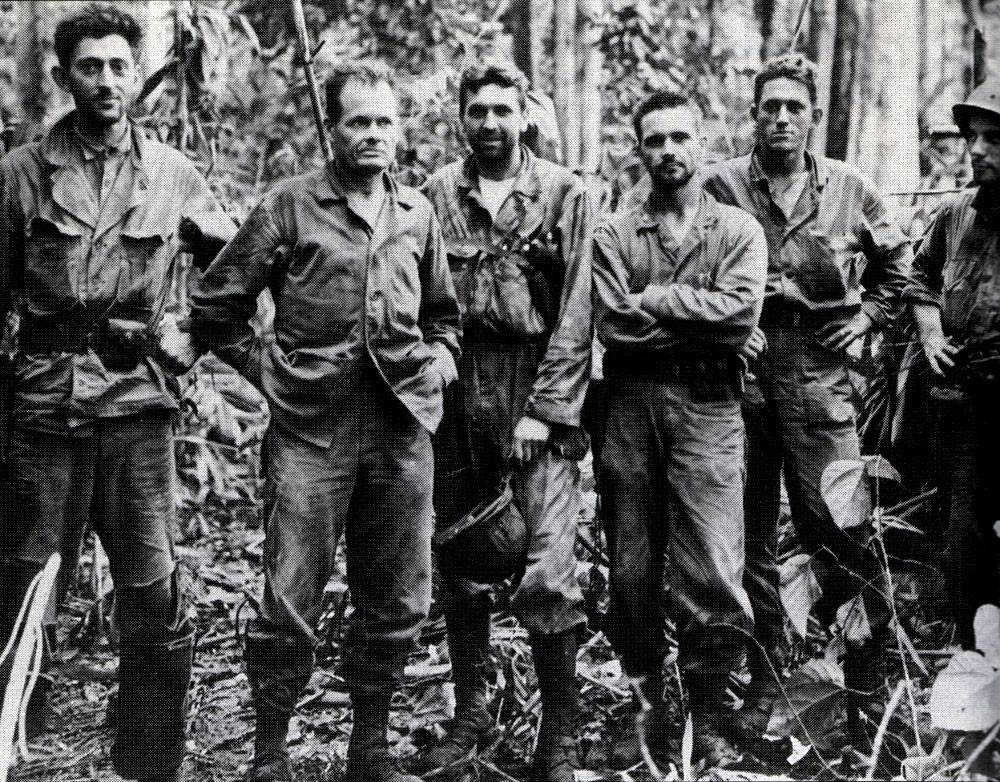
He continued to impress his superiors with his tenacity and his take-no-nonsense attitude, and by World War II, it was Lt. Col. ” Chesty” Puller, Commander of the 1st Battalion, 7th Marines. His unit was tasked with making an amphibious assault near the Matanikau River on the sunny Pacific resort island of Guadalcanal and staking out a critical strategic Margarita stand. Two companies of the 1/7 hit the beaches, and almost immediately ran into a force of Japanese regular infantry much larger and more prepared than anything the Marines were expecting to face there. The invasion force was cut-off and surrounded by an enemy counter-attack, and Puller quickly realized that he had to get his men out of there before they were cut to pieces. Another group of Marines tried to break through the Japanese flank and reach the stranded men, but the enemy resistance was too strong and they were too well-fortified to be displaced. The commander of the operation told Puller that it was hopeless and that those Marines were lost.
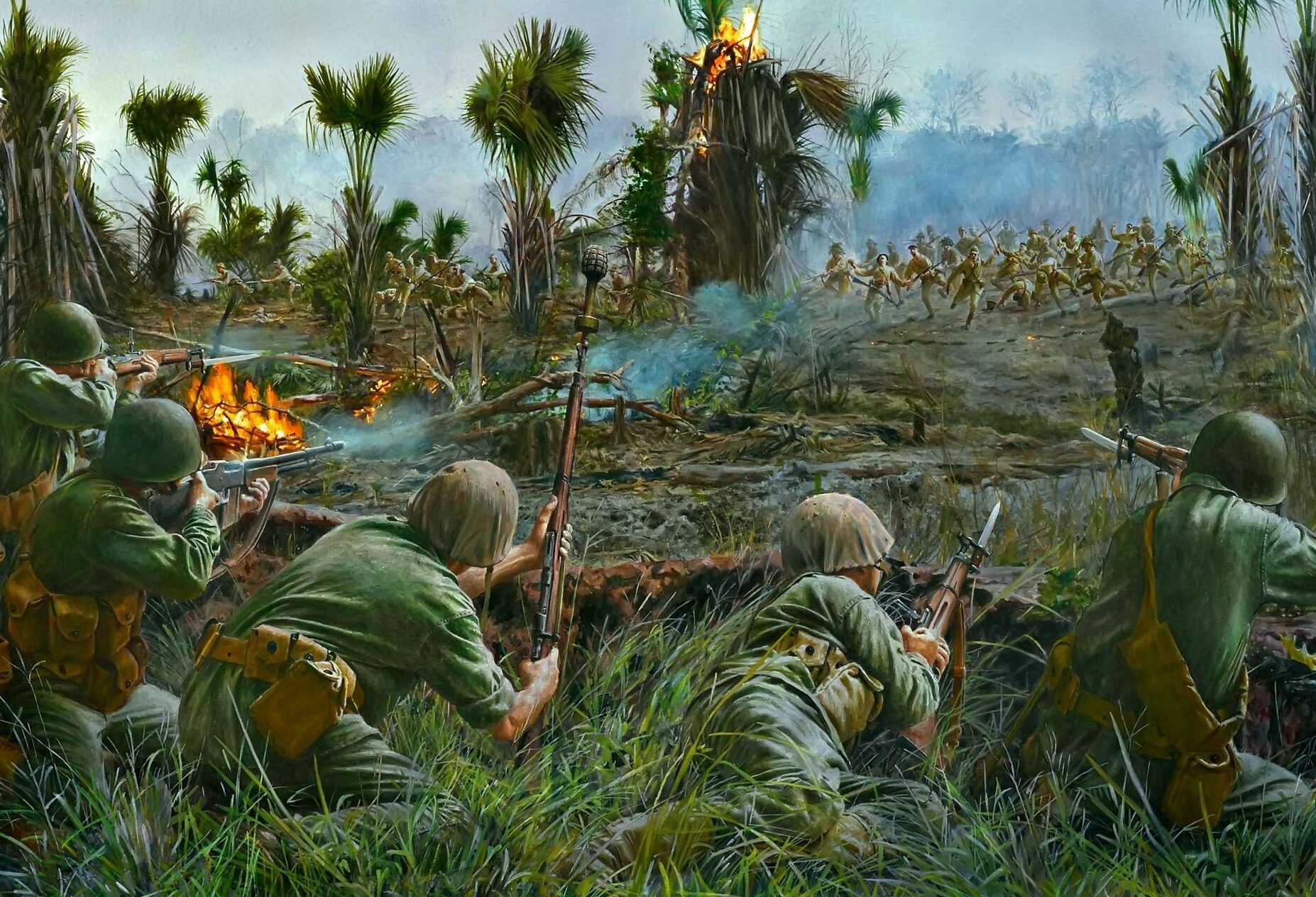
Puller Was Awarded the Bronze Star Medal For His Actions
Lewis “Chesty” Puller never resigned defeat for any reason, as he slammed his fist down on the table and immediately stormed out of camp toward the beach, where he flagged down a U.S. destroyer that happened to be sailing off the coast. Despite having absolutely no authority to do so, Puller boarded the vessel and immediately began organizing a second amphibious assault aimed at breaking through the Japanese lines. From the deck of the ship, he directed the destroyer to fire everything they had at the enemy fortifications. The shelling, coupled with the second landing, punched through the enemy blockade and cleared a path for the stranded Marines to escape. U.S. Coast Guard Signalman First Class Douglas Albert Munro – Officer-in-Charge of the group of landing craft, was killed while providing covering fire from his landing craft for the Marines as they evacuated the beach, and was posthumously awarded the Medal of Honor for the action, to date the only Coast Guardsman to receive the decoration. Puller, for his actions, was awarded the Bronze Star Medal with Combat “V.” One week after this action, Puller and his men would return to the mouth of the Matanikau River and obliterate all Japanese opposition in the sector.
Puller Was Awarded his Third Navy Cross For his Bravery
During that same campaign, Puller would once again prove his courage by going above and beyond the call of duty. On the night of 24 October, 942, 700 men of the 1/7 were positioned in a thin, mile-long line, defending an American airfield that was critical for the success of the Guadalcanal operation. They suddenly came under an intense onslaught from the seasoned men of the Japanese 17th Army, who came charging full-speed at the U.S. positions. For over three hours in the middle of the night, Puller ran up and down the U.S. lines directing his men and giving orders to his company commanders. When the smoke cleared the next morning, the hard-fighting men of the 1st Marines had killed 1,400 of the enemy and captured seventeen trucks loaded with weapons while sustaining fewer than 70 casualties.
For his bravery, Puller was awarded his third Navy Cross. According to his citation: “While Lieutenant Colonel Puller’s battalion was holding a mile-long front in a heavy downpour of rain, a Japanese force, superior in number, launched a vigorous assault against that position of the line which passed through a dense jungle. Courageously withstanding the enemy’s desperate and determined attacks, Lieutenant Colonel Puller not only held his battalion to its position until reinforcements arrived three hours later, but also effectively commanded the augmented force until late in the afternoon of the next day.”
Before he would leave Guadalcanal, Puller would be shot twice by snipers and hit once with shrapnel from an exploding mortar round, but none of that would slow him down.
Puller continued to fight in the Pacific Campaign, once again earning distinction at the Battle of New Britain Island. This time, three separate Marine battalions had been hit hard by enemy fire and lost their commanding officers, so Puller himself ran up and down the American lines, re-organizing the men under heavy machine gun and mortar fire, and eventually leading an assault that would break the enemy lines – an action that would earn him his fourth Navy Cross. Later in 1944, Puller led the 1st Marine Regiment in the Battle of Peleliu, an engagement that was one of the bloodiest battles in the history of the Corps.
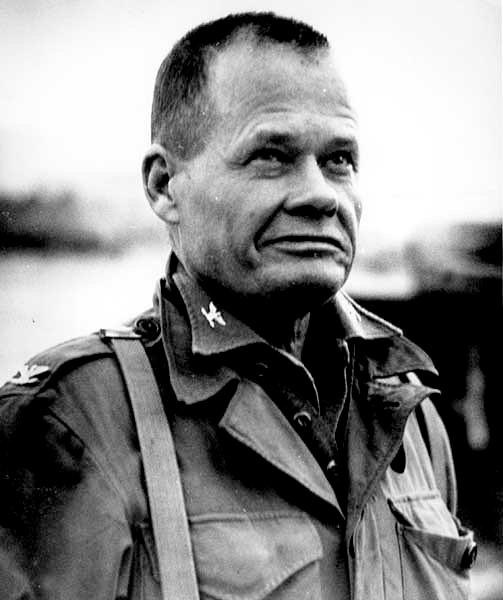
After WWII, Puller returned stateside for a while. He taught strategy and tactics at various military institutions until June 25, 1950, when North Korean troops stormed over the 38th parallel into South Korea. When Puller went to Korea, he was assigned command of the 1st Marines and landed at Inchon in September of 1950. For his courage during the landings, he earned the Silver Star and second Legion of Merit.
Lewis “Chesty” Puller Was Awarded the U.S. Army’s Distinguished Service Cross
At the Battle of Chosin Reservoir, Puller and his men found themselves holed up in the town of Koto-ri, completely surrounded by ten full Divisions of Chinese Infantry determined on killing every American they could find. Heavily outnumbered, and fighting in sub-zero temperatures, Puller’s troops broke the enemy lines, smashed through seven enemy divisions, and then stayed behind as a rearguard, bearing the brunt of the Chinese onslaught so that the rest of the Marines could complete their retreat (Puller refused to refer to it as a retreat, however, he preferred to call it, “attacking in a different direction”). The 1st Marines withstood fierce attacks by hordes of Communist soldiers but held their position, inflicted tremendous numbers of casualties on the enemy and managed to provide enough time for the Allies to evacuate all of their wounded men and salvageable equipment. Sheer bravery in the face of intense fire and a seemingly winless situation earned Puller his fifth Navy Cross – an unprecedented accomplishment that has never been equaled.
He was also awarded the U.S. Army’s Distinguished Service Cross (the equivalent to the Navy Cross). In part that citation read: “For extraordinary heroism in connection with military operations against an armed enemy of the United Nations while serving as Commanding Officer, First Marines, FIRST Marine Division (Reinforced), in action against enemy aggressor forces in the vicinity of the Chosin Reservoir, Korea, during the period 29 November to 4 December 1950. Colonel Puller’s actions contributed materially to the breakthrough of the First Marine Regiment in the Chosin Reservoir area and are in keeping with the highest traditions of the military service.”
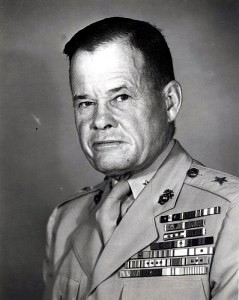
Puller was admired by his men and feared by his enemies. He always led from the front, fighting in the trenches with the men, and never flinched under even the most serious fire. One time a grenade landed next to him, and when the rest of the guys around him dove for cover, he glanced at it and nonchalantly said, “Oh, that. It’s a dud.” He inspired loyalty and courage in his Marines, treated his men well, insisted on the best equipment and discipline for his troops, and had a no fear, win-at-all-costs attitude that won him fourteen medals for combat bravery in addition to countless unit citations and campaign ribbons. He is the most highly-decorated Marine in history and a legendary figure amongst his brethren. His awards include the Navy Cross (5 awards), the Distinguished Service Cross, the Silver Star, the Legion of Merit (two awards, with Valor device), the Bronze Star (with V device), the Purple Heart, the Air Medal, and numerous campaign and foreign awards.
In July 1954, Puller took command of the 2nd Marine Division at Camp Lejeune, North Carolina until February 1955 when he became Deputy Camp Commander. He suffered a stroke and was retired by the Marine Corps on November 1, 1955, with a tombstone promotion to Lieutenant General. Lt. Gen. (Ret.) Lewis ” Chesty” Puller died on October 11, 1971, at the age of 73, after giving over 37 faithful years in service to his beloved country and Corps. He was an Episcopalian and parishioner of Christ Church Parish in Saluda, VA, and was buried with full military honors in the historic cemetery next to his wife, Virginia Montague Evans, who died on February 4, 2006.
Some say Chesty Puller got his famous nickname because of his big, thrust-out barrel chest; the myth was that the original had been shot away and the new chest was a steel plate. Others state that “Chesty” was an old Marine expression meaning cocky. Even Puller himself was not sure how he came by the nickname. In a typed letter dated November 22, 1954, written to Maj. Frank C. Sheppard, one of his staff officers at Peleliu, Puller wrote in part that he “had been called a lot of names, but why ‘ Chesty’? Especially the steel part?” Regardless of how he earned it, that nickname became forever a term of endearment by his beloved Marines.
“They are in front of us, behind us, and we are flanked on both sides by an enemy that outnumbers us! They can’t get away from us now!”
– Lewis B. ” Chesty” Puller, USMC

0 Comments